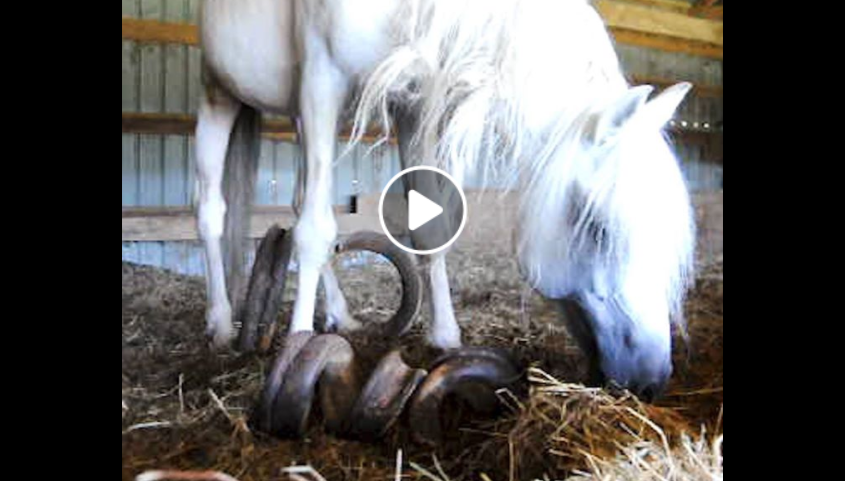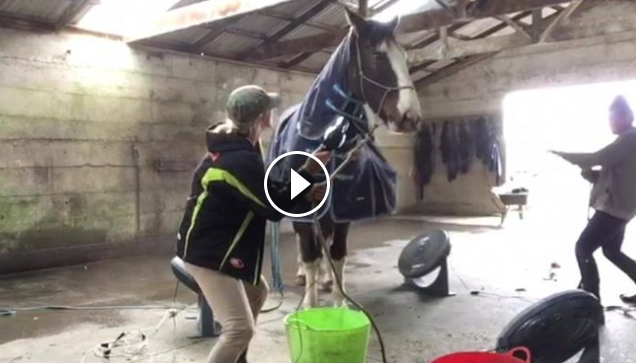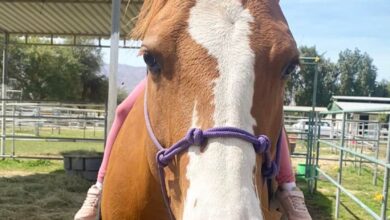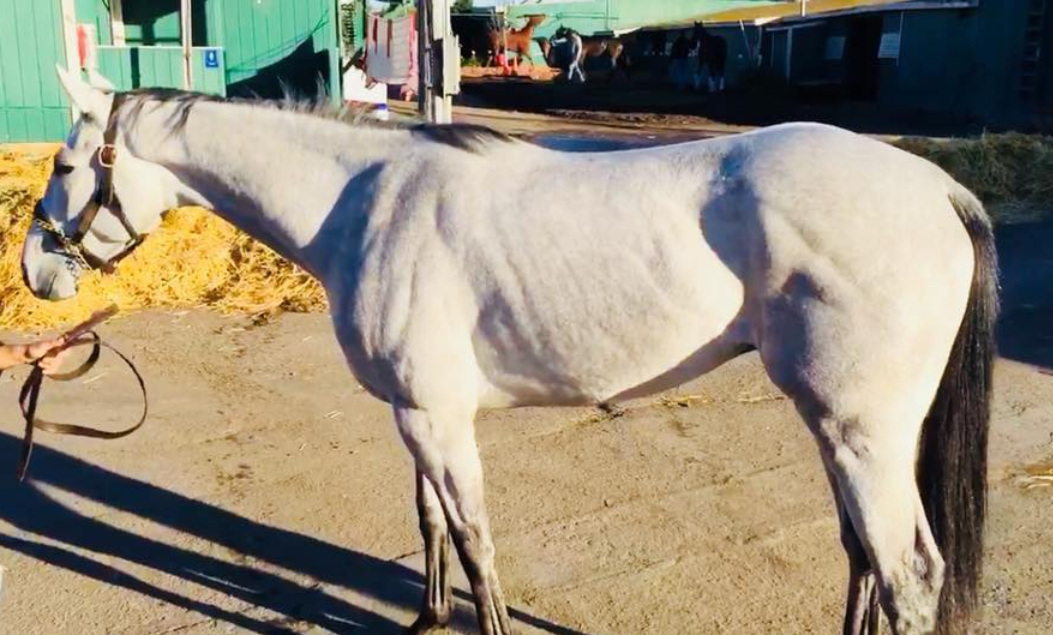Myth: A Shiny Horse Is A Healthy Horse

 Fat from any source will make your horse shiny. A fatty substance called sebum, secreted from the sebaceous glands in your horse’s skin, increases when the diet is higher in fat. It coats the hair, making it reflect the sun’s rays. But any fat will do; the type of dietary fat doesn’t matter when it comes to making the hair coat shine. But it sure does matter when it comes to your horse’s health.
Fat from any source will make your horse shiny. A fatty substance called sebum, secreted from the sebaceous glands in your horse’s skin, increases when the diet is higher in fat. It coats the hair, making it reflect the sun’s rays. But any fat will do; the type of dietary fat doesn’t matter when it comes to making the hair coat shine. But it sure does matter when it comes to your horse’s health.
The converse is true – A healthy horse is a shiny horse… as long as he’s shiny for the right reason – because you are feeding the right type of fat! With so many feeds and supplements available, where do you start?
Start with what comes naturally
Fresh grass contains 2-3% unsaturated fat consisting of a variety of fatty acids that vary in their chemical profile. There are two specific essential fatty acids that the horse’s body cannot produce and therefore must be in his diet: The omega 3 known as alpha linolenic acid (ALA) and the omega 6 known as linoleic acid. Grasses contain both of these in a 4:1 ratio of ALA to linoleic acid. Most commercially prepared horse diets, however, have an inverted ratio of these two fatty acids because high omega 6 fat sources (such as soybean and corn oils) are added to boost the fat concentration. When the omega 6 content exceeds the omega 3 content, you are asking for trouble.
Linoleic acid leads to inflammation
While some linoleic acid is important, too much can exacerbate your horse’s inflammatory response. Horses who are in training, working, or performing produce inflammation in their joints and muscles that can worsen when high amounts of linoleic acid are present. The aging joints of older horses are more painful when this omega 6 fatty acid is fed in large amounts. Inflammation leads to oxidative stress, which can damage all tissues throughout the body.
ALA reduces inflammation
Omega 3s block the formation of inflammatory molecules that are readily formed from omega 6s. Take a close look at the fat sources you are feeding to confirm that enough omega 3s are in the diet. Read the ingredients and note the concentrations. Manufacturers of products that are high in soybean oil, for example, will often tout that the product contains omega 3s. This is true, but misleading. Soybean oil does contain about 7% omega 3s. What they don’t tell you is that 50% of the fatty acids in soybean oil are from linoleic acid (omega 6).
Coconut oil is popular, but it has no omega 3s. Therefore, if you feed this as your only source of fat, your horse will become deficient in this essential fatty acid. He’ll be very shiny, but he will be unhealthy. Coconut oil is more than 90% saturated, with a smidgen of linoleic acid. The saturated fatty acids exist mostly as medium chain triglycerides, which is controversial because these types of fatty acids do not exist in grasses.
The table below provides a better understanding of oils and oily feeds:
| Approximate Fatty Acid Percentage in Oils and Oily Feeds | ||||
| Oils/Feeds | Saturated | Monounsaturated (Omega 9i) |
Linoleic Acid (Omega 6) |
Alpha Linolenic Acid (Omega 3ii) |
| Coconut oil | 91 | 6 | 3 | 0 |
| Canola oil | 7 | 54 | 30 | 7 |
| Chia seeds | 10 | 7 | 19 | 55 |
| Corn oil | 17 | 24 | 59 | 0 |
| Flaxseeds | 9 | 19 | 14 | 58 |
| Hempseedsiii | 10 | 12 | 57 | 18 |
| Olive oil | 16 | 75 | 8 | 1 |
| Rice bran | 17 | 48 | 35 | 1 |
| Sunflower seeds | 12 | 16 | 71 | 1 |
| Soybean oil | 15 | 26 | 50 | 7 |
| Wheat germ | 18 | 25 | 50 | 5 |
Hay has virtually no fatty acid content
Once fresh grass is cut, dried and stored, the naturally occurring unsaturated fatty acids are destroyed by oxygen. If hay is the predominant forage source for your horse, it is critical that you add a fat source that offers more omega 3s than omega 6s. Ground flaxseed or chia seeds are best for omega 3s. When supplementing, limit the amount fed to no more than 1/2 cup per 400 lbs of body weight (120 ml per 180 kg of body weight). The dosage for flaxseed oil should be 1.5 tablespoons per 400 lbs of body weight (22.5 ml per 180 kg body weight).
Not all equines are the same
Equines such as ponies, minis, donkeys, and mules cannot tolerate as much fat as horses. They require some fat, but generally 1/3 to 1/2 the amount given to horses, proportionate to their weight.
Bottom line
Read the ingredient label on any feed or supplement designed to add more fat to your horse’s diet. The ingredients may be imbalanced. While it will make your horse shine, it may do nothing to contribute to overall health and worse, may actually increase inflammation.
Written By, Juliet M. Getty, Ph.D. Dr. Getty is an internationally respected, independent equine nutritionist who believes that optimizing horse health comes from understanding how the horse’s physiology and instincts determine the correct feeding and nutrition practices. She is available for private consultations and speaking engagements. Visit www.gettyequinenutrition.com for more information.
iOmega 9s are another classification of fatty acids that do not promote inflammation and may protect the heart and blood vessels.
iiFish oils are also high in omega 3s. However, ALA from plants is converted to the longer chain omega 3s found in fish oils.
iiiHempseeds also contain the beneficial omega 6 fatty acid known as Gamma Linolenic Acid, which reduces inflammation.





